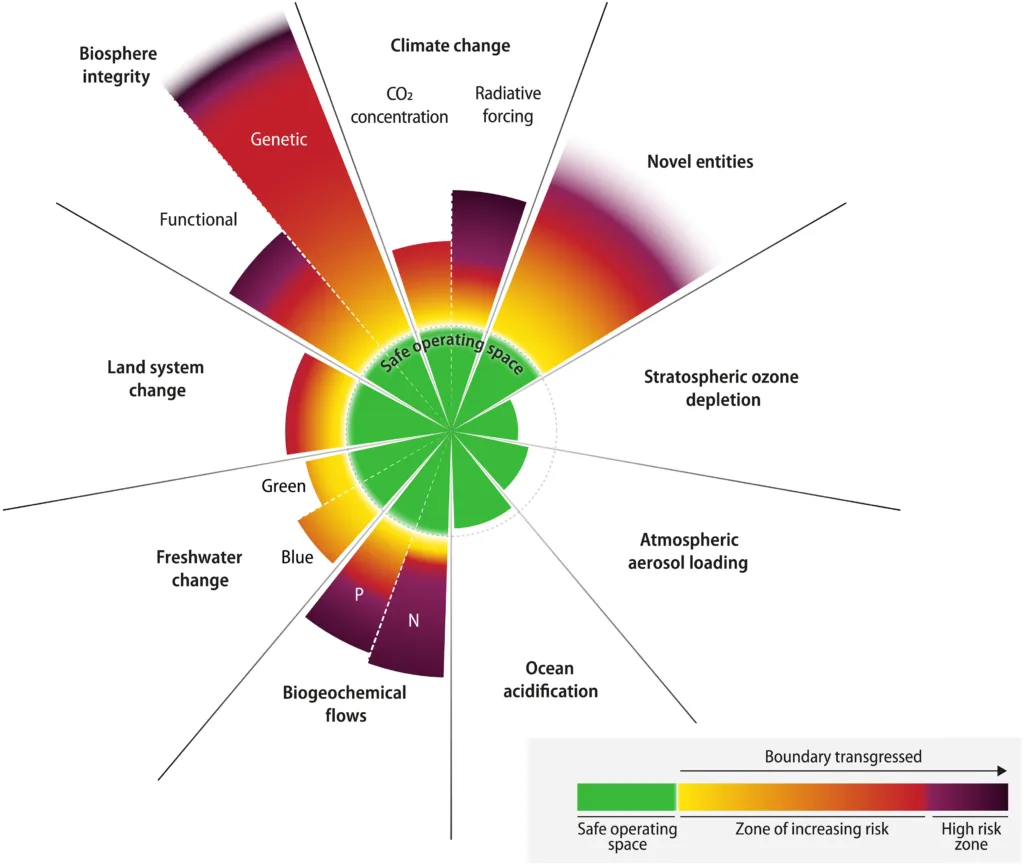Science Extract: In a recent update on the planetary boundaries framework, scientists have presented alarming findings, indicating that Earth has crossed critical thresholds in six out of nine essential planetary processes. The implications are dire, suggesting that humanity now resides far beyond the safe operating boundaries of our planet.
The planetary boundaries framework, rooted in Earth system science, identifies vital processes crucial for maintaining the stability and resilience of our planet as a whole. These processes aim to ensure that Earth remains in a state akin to the Holocene epoch, characterized by a relatively stable and warm climate conducive to human development and prosperity over the past 10,000 years.
However, current human activities have propelled Earth beyond the Holocene’s environmental stability, ushering in the proposed Anthropocene epoch. The Anthropocene is marked by unprecedented human-induced changes in various Earth system components, putting the planet on a trajectory with uncertain global environmental conditions.
The update reveals that six planetary boundaries are presently transgressed. Climate change, biosphere integrity (genetic diversity), land system change, and biogeochemical flows (nitrogen and phosphorus) have experienced an escalation in transgression since 2015. Additionally, the human appropriation of net primary production (HANPP), a critical factor for biosphere integrity, is deemed transgressed. The framework now includes refined control variables for both green and blue water components within the freshwater change planetary boundary, and both components are also transgressed. The proposed global boundaries for aerosol loading and novel entities are also discussed, with the latter being transgressed while regional aerosol loading exceeds the boundary.
To illustrate the interconnectedness of anthropogenic impacts on the Earth system, the study delves into the combined effect of transgressing climate and land system change boundaries. Simulations show that these transgressions occurred around 1988, pushing the Earth into a zone of increasing risk for systemic disruption. Maintaining these boundaries at 450 ppm of atmospheric CO2 and specific forest cover percentages offers a glimpse of potentially stabilizing planetary conditions, albeit still at risk.
An essential takeaway emerges: Humanity holds a potent tool against climate change by respecting the land system change boundary. Restoring global forest cover to late 20th-century levels can significantly sequester atmospheric CO2 by 2100, pivotal in achieving global climate goals. Failing to adhere to this boundary could imperil efforts to meet targets set in the Paris Agreement.
With vital boundaries crossed, immediate and decisive global action is imperative to safeguard Earth’s future. Humanity must come together, adopting sustainable practices and policies to restore and maintain a balanced relationship with the Earth system, ensuring a habitable planet for generations to come.
Reference: Richardson, K., Steffen, W., Lucht, W., Bendtsen, J., Cornell, S. E., Donges, J. F., Drüke, M., Fetzer, I., Bala, G., Feulner, G., Fiedler, S., Gerten, D., Gleeson, T., Hofmann, M., Huiskamp, W., Kummu, M., Mohan, C., Nogués-Bravo, D., Petri, S., . . . Rockström, J. (2023). Earth beyond six of nine planetary boundaries. Science Advances. https://doi.org/adh2458
